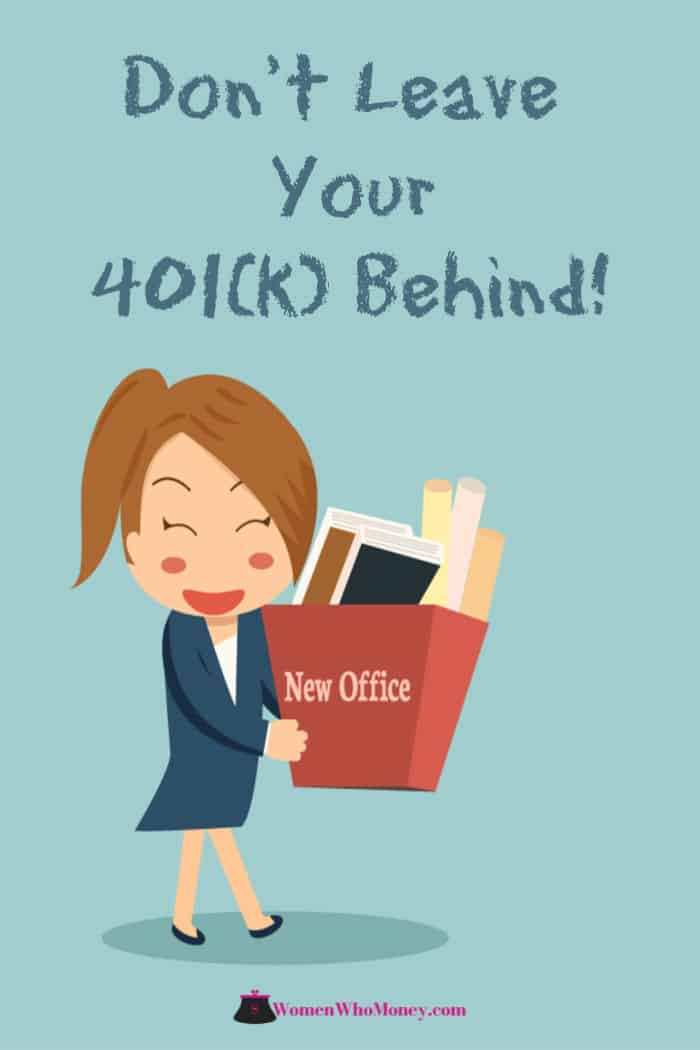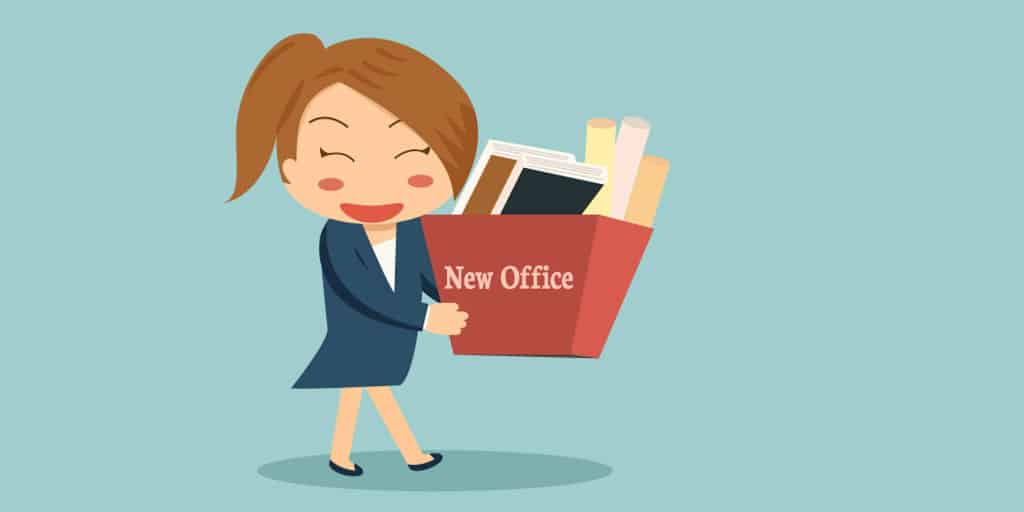Can You Roll a 401k to a 403 B
(Please note, this page may contain affiliate links and we may earn fees from qualifying purchases at no additional cost to you. These earnings help us offset the cost of running this site. Read our Disclosure and Disclaimer for further info.)

Millennials are job switchers. Gallup polls have found that 21% of millennials report changing jobs within the past year.
Outside of learning the new company org chart, job switching presents another challenge: what to do with your old 401(k) or 403(b).
Currently, many millennials do nothing.
As a result, a 2017 study found that 59% of 25 – 34-year-olds had at least one old 401(k). For most individuals who are far away from retirement, this is almost certainly not the right option.
This article will lay out the disadvantages of doing nothing. It will also address some misconceptions about 401(k) rollovers, e.g., "you should not roll over a 401(k) if it's performing well."
Options for Your 401(k) or 403(b)
When you leave your job, you have four options for what to do with your 401(k) or 403(b):
- Cash-out (which can come with penalties for early withdrawal)
- Keep your money where it is
- Roll your 401(k)/403(b) to your new employer
- Roll your 401(k)/403(b) to an individual retirement account (IRA) through a financial services company like Vanguard, Schwab, or Blackrock.
Before going into these options, it's important to note that a 401(k), 403(b) or an IRA is an account.
Within these accounts, you can choose between a variety of investment options with varying fees, risk profiles, and returns (aka how much they will grow).
You can think of an IRA or a 401(k) like choosing the restaurant where you want to eat. Once you're there, you have a variety of menu options at different price points, flavor profiles, and nutritional value.
An employer-sponsored plan offers curated investing options. When you're in an employer-sponsored plan, you don't get to choose the restaurant.
If your employer has chosen Chipotle, you can choose a Carnitas burrito or a vegetable burrito bowl. But you're out of luck if you're in the mood for tomato bisque.
In contrast, choosing an IRA gives you the choice of what restaurant to go to. And what menu options to select.
You can choose to go to Whole Foods where you can affordably eat sushi, pizza, or the hot food bar. But you can also choose a fancy restaurant at a higher price point but with more personal attention.
Returning to the four options for your old 401(k) or 403(b), cashing it out is the worst option.
When you cash out a retirement account, you generally pay taxes and an early withdrawal fee of 10%. In addition, you restart your retirement savings growth from zero.
The next two options are to keep your money where it is (the do-nothing option that most millennials are opting for) or roll it to your new employer.
As you'll see below, these are somewhat similarly bad options, but the "do nothing" option has some additional downside.
Doing Nothing or Rolling Over Into a New 401(k) or 403(b)

Below are the three primary disadvantages of leaving your money where it's at or rolling your 401(k) or 403(b) money to your new employer's company-sponsored retirement plan.
First, retirement accounts have fees and these fees are hard to identify and compare.
If you're going to keep your money somewhere, you should know what it costs. However, it's not always straightforward and simple to determine the cost.
Plans can charge a mixture of account fees, load fees, and investment fees (often called expense ratios which doesn't even use the word fees!).
You can find these fees in the plan's ERISA 404a Participant notice. But figuring out how these fees impact your money's growth is not easy.
Each time you move jobs, you will need to assess the old and new 401(k)/403(b) plans' fee disclosures wading through the jargon and different fee structures.
These fees might seem small and insignificant but a difference in just 0.5% in fees can have more than $100,000 impact on your retirement if you're saving even $10,000 a year.
In addition, as an ex-employee, you may be charged higher administrative fees than active employees.
Second, 401(k) and 403(b) have limited investment options.
Some employer plans offer fewer than ten investment options. Some offer more, but few that are low fee.
For example, there may be some index fund options that have fees under 0.3%, but Target-date fund options with expense ratios over 1%.
Since Target Date funds are the better option for "hands-off" investors, this can force you to choose between the "right" options for you and minimizing your fees.
In addition, if you want to invest in socially good funds or adopt another custom strategy, you probably won't have access through your employer plan.
Third, if you choose NOT to roll over, you can end up with too many retirement accounts.
Fewer accounts mean more than just fewer passwords; it's also easier to estimate your savings.
Most importantly, having your money invested across multiple accounts makes it very difficult to create a coherent investment strategy.
Most financial experts advise that you invest in riskier assets like stocks when you're young and shift to more conservative investments like bonds as you get closer to retirement.
- Why Is Taking Some Financial Risk Important?
That strategy allows you to maximize growth but also helps protect your wealth in case of a market downturn.
When your retirement is held across five or more plans, it is very challenging to manage your investing allocations.
These three reasons are the primary drawbacks of doing nothing with your 401(k) or 403(b) or rolling your money to your new employer's plan.
Now, for the advantages of a rollover to an IRA (option 4 if you're keeping track).
Advantages of a 401(k) or 403(b) Rollover
First, you can pick an IRA provider who is known for their commitment to low fees and investment variety.
Certain IRA providers like Vanguard, Blackrock, and Schwab are known for their transparency and commitment to low fees. Many charge no administrative fees on IRAs with over $10,000 and offer expense ratios less than 0.2% on a large variety of investments.
In addition, while a 401(k) or 403(b) will offer a curated list of investing options, an IRA will give you access to a much larger list of funds.
The going wisdom used to be that the buying power of a large 401(k) plan would get you better pricing than going it alone. However, in a world where there are NO-fee mutual funds, you don't need your employer to get access to cheap investment options.
Plus, if you want to invest in socially good funds or other specific accounts, you probably won't have access through an employer plan like you will through an IRA.
Second, you can see all your money in one place.
As noted above, most financial experts advise that you invest in risky assets like stocks when you're young and shift to more conservative investments like bonds as you get closer to retirement.
It's much easier to make sure your money is invested strategically and that your savings are on track for retirement when it's in one account with one password and one fee disclosure.
Third, even if your 401(k) or 403(b) is performing well, you can probably get that same growth at a lower cost in an IRA.
A common misconception is that you do not want to roll over a 401(k) if it's "performing well." However, your retirement accounts are invested in stocks and bonds from the broader market.
The market performed very well in 2019. Therefore, you want to compare how well you performed in your employer 401(k) or 403(b) plan against an option with comparable risk in an IRA.
To give an example, your retirement plan may contain a 2050 Target Date fund. This fund could have a YTD return of 15.9%. That's pretty good until you compare it to the 24.63% YTD return of a comparable Vanguard 2050 Target Date Fund in an IRA.
Plus, the 401(k) Target Date plan may charge a 2.21% investment fee compared to 0.15% fee in the Vanguard option.1 On $10,000, that's $1,082 in fees. On $50,000, it's $5,410.
Every year investment returns compound, so the money you lose in fees really hurts your savings in the long run.
Retirement fees can vary widely. As you change jobs, you may go from a publicly traded IT consulting firm with great options and low retirement fees to a small start-up with no 401(k) match and high-priced investment options.
Most people pick jobs because of the salary, the people, and the values of the company. The strength of the retirement plan is a low priority.
Creating a "rule" for yourself to always roll over your 401(k) or 403(b) will ensure you take care of your retirement as you grow your career.
When NOT to Roll Over Your Retirement Account
There can be good reasons to NOT roll over an old 401(k) or 403(b) to an IRA. For tax reasons, it's generally not a good idea to roll over company stock that has appreciated in value.
Second, if you're afraid of bankruptcy or are planning to retire early, leveraging your employer's 401(k) or 403(b) provides additional protection from creditors and could allow you to take out funds before age 59 ½ without penalty.
Finally, while this is not a reason to avoid a rollover to an IRA, it's important to note that many financial professionals will get a commission if you use them to roll your dollars to an IRA, but not if you roll your dollars to your new 401(k).
Should You Rollover a 401(k) or 403(b)?

For most millennials, rolling over your 401(k) or 403(b) to a low-fee IRA is a smart financial decision. You can get both low fees and a lot of variety.
Reasons people "do nothing" can range from "my current 401(k) is performing well" to "I want to look at the returns before I make a decision."
If you decide now to roll over your 401(k) every time you switch jobs, you won't have to make this decision each time you change employers.
- How Can I Use My 401(k) Savings Plan to Make More Money?
While it's never fun to spend time on the phone with financial services customer service, it takes less than an hour to set up an IRA and a similar time investment to rollover your old plan.
If you reduce your fees by 0.5%, you could have a $120,000 return on those two hours.2 Your future self will thank you.
Article written by, guest contributor, Eryn Schultz, the founder of Her Personal Finance. Starting with a desire to help her co-workers get their 401(k) match, Eryn began creating financial content using her education from Harvard Business School. She is the creator of a 10-week money bootcamp, and would love for you to join her money community.
1A 2.21% investment fee is based on a real retirement plan for a smaller employer. Larger employers may have considerably lower fees.
2The actual savings will vary based on factors like how much you save, how old you are, and how the market performs. The $120,000 examples assumes a $50,000 starting retirement account, additional savings of $10,000 per year, investment returns (pre-fees) of 6%, fee reduction from 0.7% to 0.2%, and that you're 33 now retiring at 65.
Amy Blacklock and Vicki Cook co-founded Women Who Money in March 2018 to provide helpful information on personal finance, career, and entrepreneurial topics so you can confidently manage your money, grow your net worth, improve your overall financial health, and eventually achieve financial independence.
Can You Roll a 401k to a 403 B
Source: https://womenwhomoney.com/rollover-401k-403b/
0 Response to "Can You Roll a 401k to a 403 B"
Post a Comment